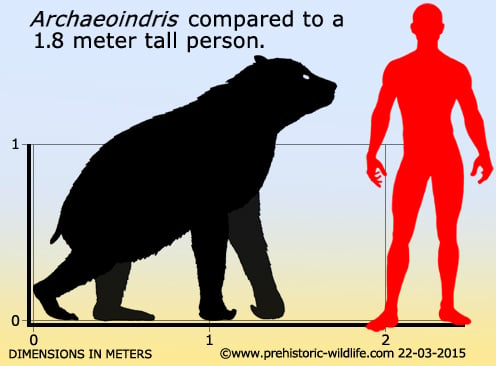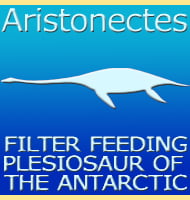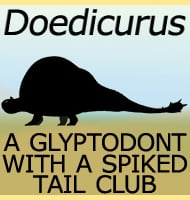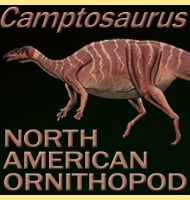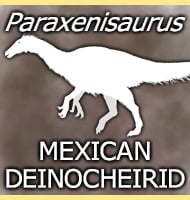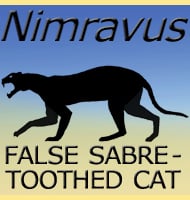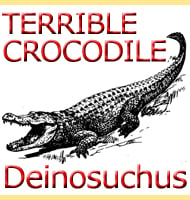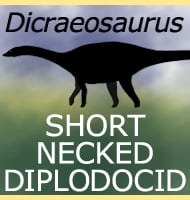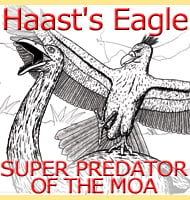In Depth
Comparable in size to a gorilla, Archaeoindris is one of the largest known sloth lemurs. Initially considered to have been a ground dwelling quadruped, further study has now led to the suggestions that Archaeoindris could have still climbed branches (albeit the thicker ones that could support its weight) as it foraged for food. This is where the sloth comparison comes from, as rather than being fast and agile like the more lightly built indriid lemurs we know today, Archaeoindris would have probably been slower and more sluggish to reduce energy expenditure as it foraged.
Other genera of sloth lemur include Babakotia, Mesopropithecus and Palaeopropithecus.
Further Reading
– The taxonomic attributions of giant subfossil lemur bones from Ampasambazimba: Archaeoindris and Lemuridotherium. – Journal of Human Evolution 17 (4), p379-391 – M. Vuillaume-Randriamanantena – 1988. – The extinct sloth lemurs of Madagascar. – Evolutionary Anthropology: Issues, News, and Reviews 12 (6): 252–263. – L. R. Godfrey & W. L. Jungers – 2003.
